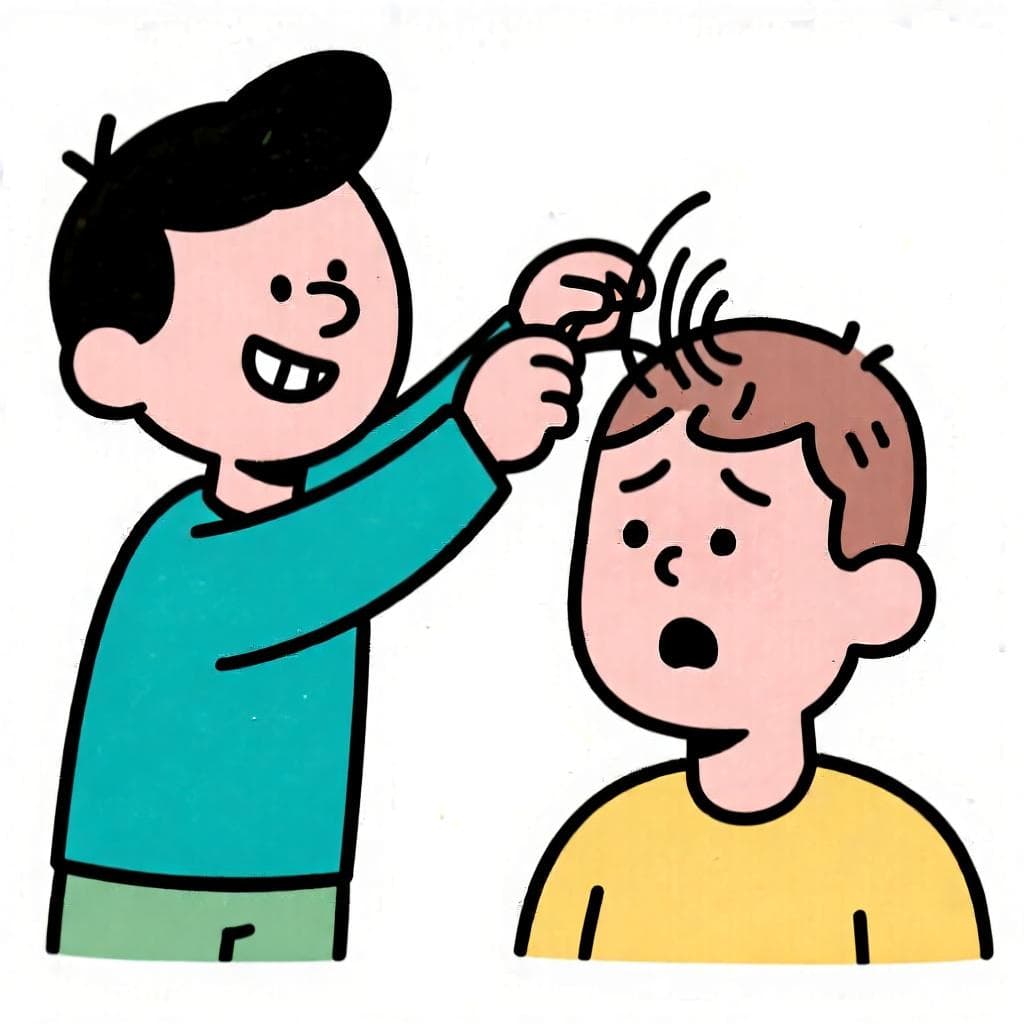Tomar el pelo
/toh-MAR el PEH-loh/
To tease someone, pull their leg, or trick them in a playful way.
💡 Understanding the Idiom
🎨 Literal vs. Figurative

Literally, this means 'to take the hair'.

In reality, it means to tease or joke with someone, like 'pulling their leg'.
Key Words in This Idiom:
📝 In Action
No te enfades, solo te estoy tomando el pelo.
B2Don't get mad, I'm just pulling your leg.
¿En serio te vas a mudar a Japón? ¡No me tomes el pelo!
B2Are you really moving to Japan? You're kidding me!
A mi abuelo le encanta tomarle el pelo a mi abuela diciendo que se le ha olvidado su aniversario.
B2My grandpa loves to tease my grandma by telling her he's forgotten their anniversary.
📜 Origin Story
This phrase has a rather mischievous origin story. It's believed to come from an old custom where people would pull the wigs or 'pelucas' of the nobility as a prank. Another theory suggests it's related to an old, cruel practice of shaving the hair of prisoners or those deemed foolish to publicly shame them. 'Tomar el pelo' became a symbolic way of treating someone like a fool, but over time, it softened into the harmless, playful tease we know today.
⭐ Usage Tips
Keep it Playful
Use 'tomar el pelo' in friendly, informal situations. The whole point is that it's a joke and not meant to be taken seriously. It’s perfect for teasing friends about silly beliefs or telling a tall tale to see if they'll believe you.
The Structure: 'Tomar el pelo A ALGUIEN'
Remember that you're always 'taking the hair FROM SOMEONE'. This means you'll almost always see it with what's called an indirect object pronoun (like 'me', 'te', 'le'). For example, 'Mi amigo me toma el pelo' (My friend teases me).
❌ Common Pitfalls
Confusing it with Lying
Mistake: "Using 'tomar el pelo' for a serious, malicious lie."
Correction: This idiom is for lighthearted fun. If someone is trying to seriously deceive you for a bad reason, you would use 'engañar' (to deceive) or 'mentir' (to lie). The intention behind 'tomar el pelo' is always a joke.
📚 Related Grammar
Want to understand the grammar behind this idiom? Explore these lessons for a deep dive:
Indirect Object Pronouns (me, te, le, nos, os, les)
This idiom always needs a pronoun to show *who* is being teased, like when we say "te estoy tomando el pelo" (I am teasing you) or "le encanta tomarle el pelo a mi abuela."
The Present Progressive ('estar' + gerund)
The first example uses the progressive form, "estoy tomando" (I am taking/pulling), to show the action of teasing is happening right now, which is a very common way to use this idiom.
🌎 Where It's Used
Spain
Extremely common and used daily in informal conversations across all regions.
Latin America
Widely understood and used in many countries like Argentina, Mexico, and Chile. However, some regions might prefer local equivalents like 'vacilar' (in some contexts) or 'cargar a alguien' (in Argentina).
🔗 Related Idioms
✏️ Quick Practice
💡 Quick Quiz: Tomar el pelo
Question 1 of 1
If your friend says, '¡Te estoy tomando el pelo!', what are they doing?
🏷️ Tags
Frequently Asked Questions
Is 'tomar el pelo' considered rude?
Generally, no. It’s used in playful, informal contexts among friends or family. However, like any teasing, the tone of voice and the relationship between the people are very important. It's not something you'd say to your boss or a stranger.
How do I say 'Stop pulling my leg!' in Spanish?
You can say '¡No me tomes el pelo!' or '¡Deja de tomarme el pelo!'. Both are very natural ways to tell someone to stop teasing you.
.jpg&w=256&q=75)
